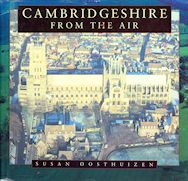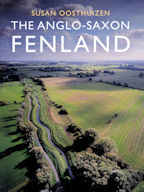The book begins with the traces of the ditches and barrows made by the earliest inhabitants. It then takes the reader through Roman and Saxon times to the Middle Ages and on to the visible remains of the sixteenth and seventeenth centuries. It vividly records the impact of the industrial revolution and the rapid developments of the nineteenth century, and the final chapters show the motorways, housing estates, city centres and golf courses of the twentieth century.
The photographs, which have been chosen from the Cambridge University Collection of Air Photographs, cover the full range of sites that can be found in the county. Famous monuments are included – Ely Cathedral, Cambridge colleges and Wimpole Hall – and so are rare but no less intriguing places like burial mounds and forts, abandoned villages and medieval fields. The book also shows parish churches and village greens, canals and gardens and the orderly patterns of modern suburbs and towns. All the images are accompanied by expert captions which use the results of the latest archaeological and historical research to explain the changing appearance of each place.
Cambridgeshire from the Air will add to the knowledge, appreciation and enjoyment of everyone who takes an interest in the history of Cambridgeshire and in the evolution of the English landscape.

